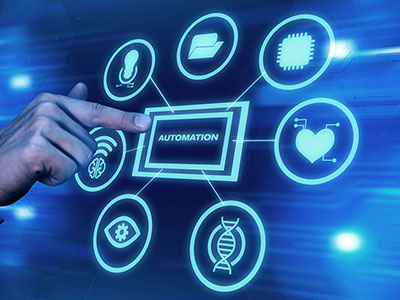
RPA and Low-Code: Separate but Complementary

Table of Contents
Automation Tools
With the current pace of innovation in AI technology, it is tough for companies to streamline its adoption for their day-to-day business processes. In such cases, RPA and Low-Code platforms offer best-fit solutions.
Talk to Our Automation Expert!
+91 855-975-9735
Want to experience Intelligent Automation in Action or Need help Building the Right Automation Plan?
RPA vs Low-Code
What’s the difference between robotic process automation (RPA) and low-code tools?
Let’s learn the key differences.
Robotic process automation (RPA) and low-code technologies are both important components of your automation strategy and toolkit. But how are they different? How do they complement one another? And how can they help automate anything from basic tasks to sophisticated processes? Much uncertainty still exists, so let's break it down to help you comprehend and explain these concepts to others.
RPA – Defining in plain terms
RPA (Robotic Process Automation) involves software bots mimicking and automating repetitive, rule-based tasks humans perform on computers. These bots can navigate interfaces, extract data, and enter inputs, freeing up workers from tedious, error-prone activities. Common RPA use cases include transaction reconciliation, onboarding processes, billing, and data entry.
However, RPA differs from AI (Artificial Intelligence). While RPA automates predefined tasks, AI systems like machine learning mimic human-like intelligence, learning and adapting from data over time. RPA tools lack such cognitive capabilities and cannot make complex decisions independently.
But wait a bit, are you feeling that kind of automation sounds a lot like AI?
Not quite, RPA differs from AI (Artificial Intelligence). While RPA automates predefined tasks, AI systems like machine learning mimic human-like intelligence, learning and adapting from data over time. RPA tools lack such cognitive capabilities and cannot make complex decisions independently.
Low-code– Defining in plain terms
Low-code platforms provide a visual, model-driven approach to application development. Rather than writing complex code line-by-line, users can build applications by dragging and dropping pre-built components, using intuitive graphical interfaces. This enables both professional developers and non-technical "citizen developers" to rapidly create custom business applications with minimal coding.
A key benefit of low-code is the ability to develop applications faster than traditional coding methods, while also simplifying ongoing maintenance and updates. The visual models make it easier to collaborate across teams and quickly adapt apps to changing requirements. Leading low-code platforms streamline the entire app lifecycle, from design and build to deployment and iteration, delivering speed, agility, and governance compared to conventional development approaches.
How low-code relates to RPA and AI

While RPA can automate repetitive tasks, building sophisticated RPA bots often requires specialized expertise in areas like data engineering, browser automation, and system integration. This high-code approach can be challenging due to the shortage of skilled software engineers. Low-code platforms provide a compelling solution by enabling rapid development of automations without extensive coding skills.
Low-code strikes a balance between traditional high-code and no-code approaches. It allows citizen developers to build automations using visual tools, while retaining the ability to extend and customize with code when needed. Crucially, low-code enables much faster and more agile development than high-code, which is essential for adapting to changing business needs. Adopting low-code as part of an automation strategy, alongside RPA and AI technologies on a unified hyperautomation platform, maximizes agility, speed, and ease of maintenance.
Glimpsing the Benefits
Maintenance with Ease
Low-code or no-code RPA bots are easier to maintain compared to standalone RPA tools, as they involve minimal programming. Even non-technical users can create or modify these bots with ease. This has enabled the rise of citizen developers - business users with little coding experience who can build and maintain applications within their functions. A Gartner report predicts that by 2024, 80% of technology products and services will be built by non-tech professionals, driven largely by low-code development tools.
Time- and Cost-Effective
Traditional RPA required tedious code changes for process updates, but low-code/no-code tools allow easy modifications through intuitive UIs and drag-and-drop features, saving significant time and costs.
Affordable Legacy System Automation
Automating outdated systems is typically expensive and time-consuming, even taking years and costing billions. Low-code platforms help rebuild or automate these legacy systems faster by structuring unstructured data through APIs, making the process more streamlined and affordable.
Helps Bridging the Engineering Skill Gap
Low-code development tools help bridge the IT skills gap many enterprises currently face due to challenges like the Great Resignation. These tools have a low learning curve and enable rapid application development with reusability and scalability, without extensive training requirements. Gartner predicts that by 2023, the number of citizen developers at large enterprises will be at least four times the number of professional developers, indicating the growing adoption of low-code.
By using low-code or no-code RPA, organizations can become more agile, reskill employees cost-effectively for in-house innovation, aid employee retention, and leverage AI capabilities for building mission-critical applications. The flexibility, customization, and proactive automation enabled by low-code/no-code RPA make a compelling case for businesses to adopt this emerging trend in automation.
AIRPA Advances Low-Code RPA Into New Era Of AI Process Automation
Leverage the full potential of process automation by consolidating AI capabilities, robotic process automation, and low-code application development into one comprehensive low-code platform. This integrated hyperautomation solution provides everything you need to rapidly build, deploy, and continuously optimize intelligent automations across your enterprise.
Conclusion
AI-RPA Process Platform by AIRPA offers a comprehensive solution for end-to-end process management. This integrates RPA tools for designing, automating, and enhancing complex workflows, providing you with all necessary resources in one package.
Popular Tags:
Related Articles

How Automation and AI are Reshaping the Fintech Landscape
Is AI the driving force behind fintech's rapid evolution?





